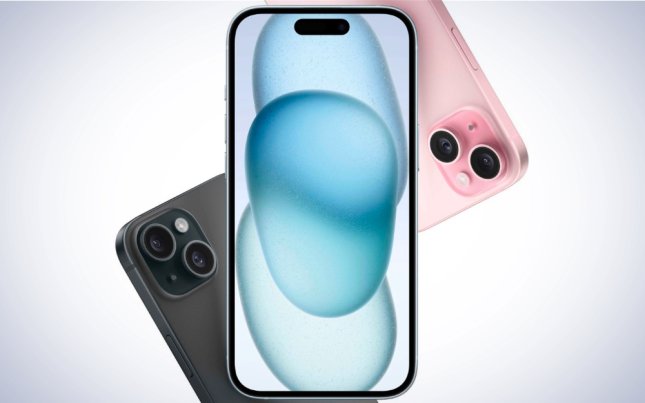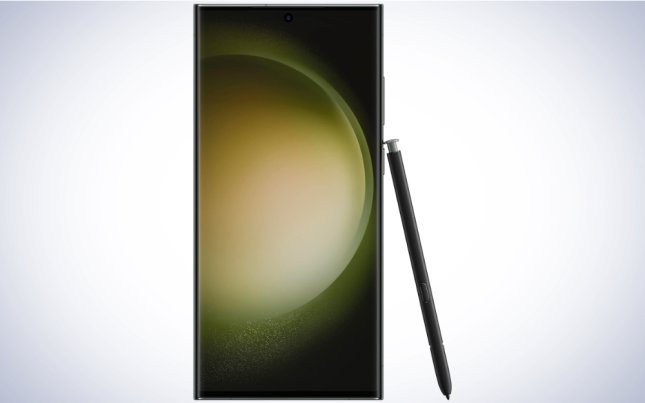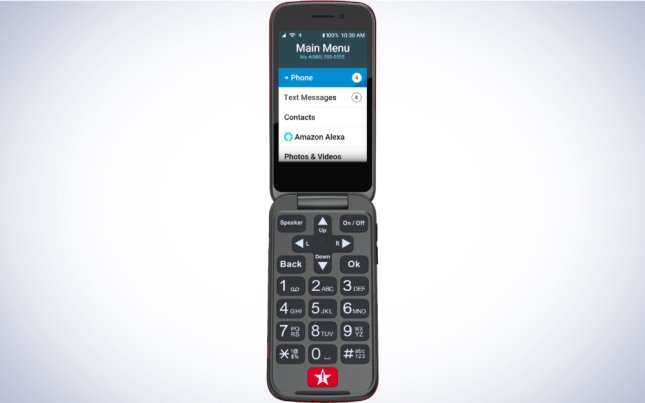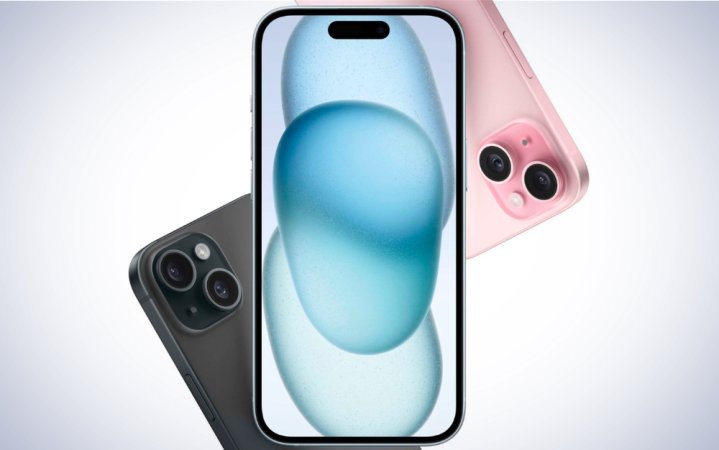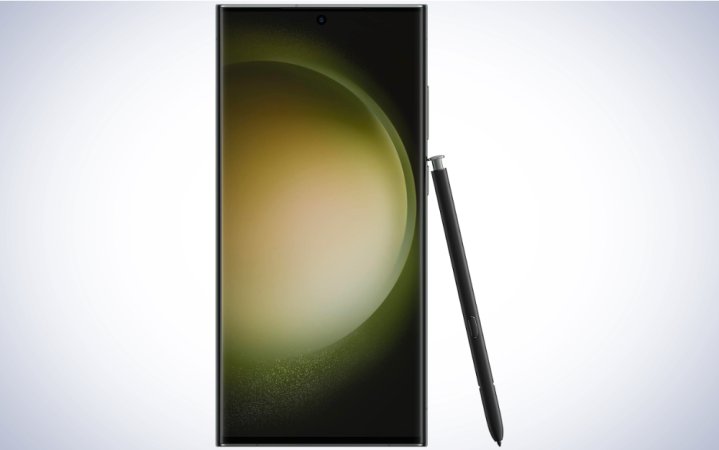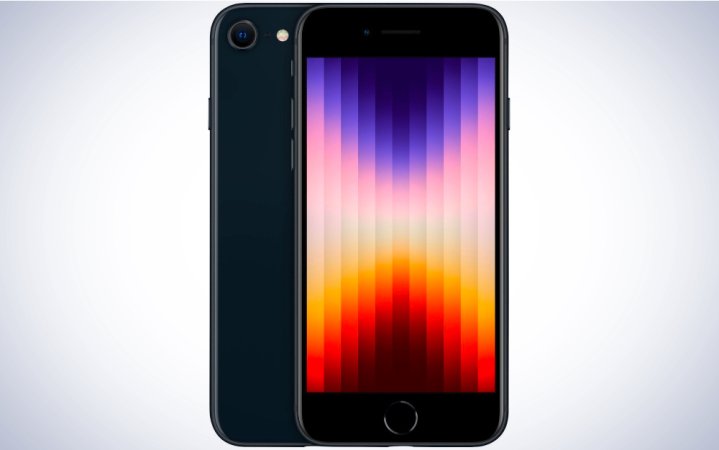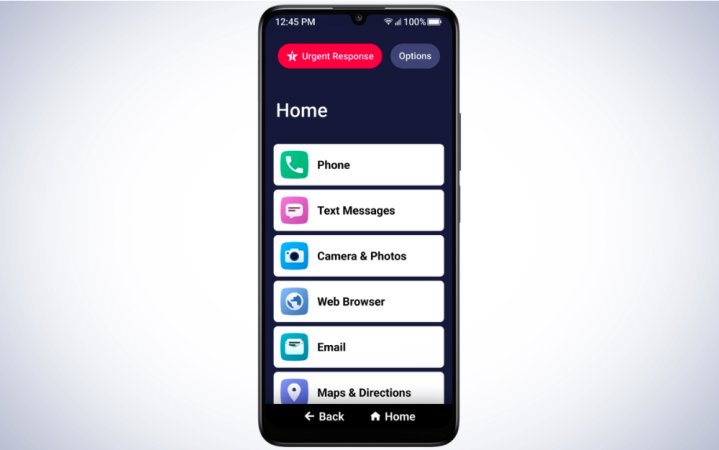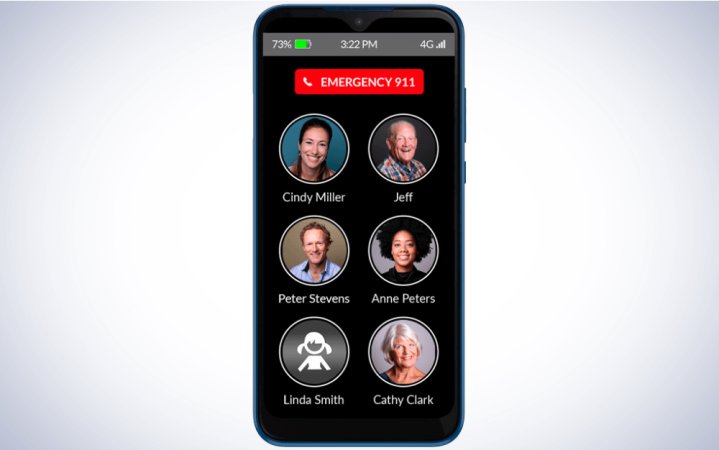We may earn revenue from the products available on this page and participate in affiliate programs. Learn more ›
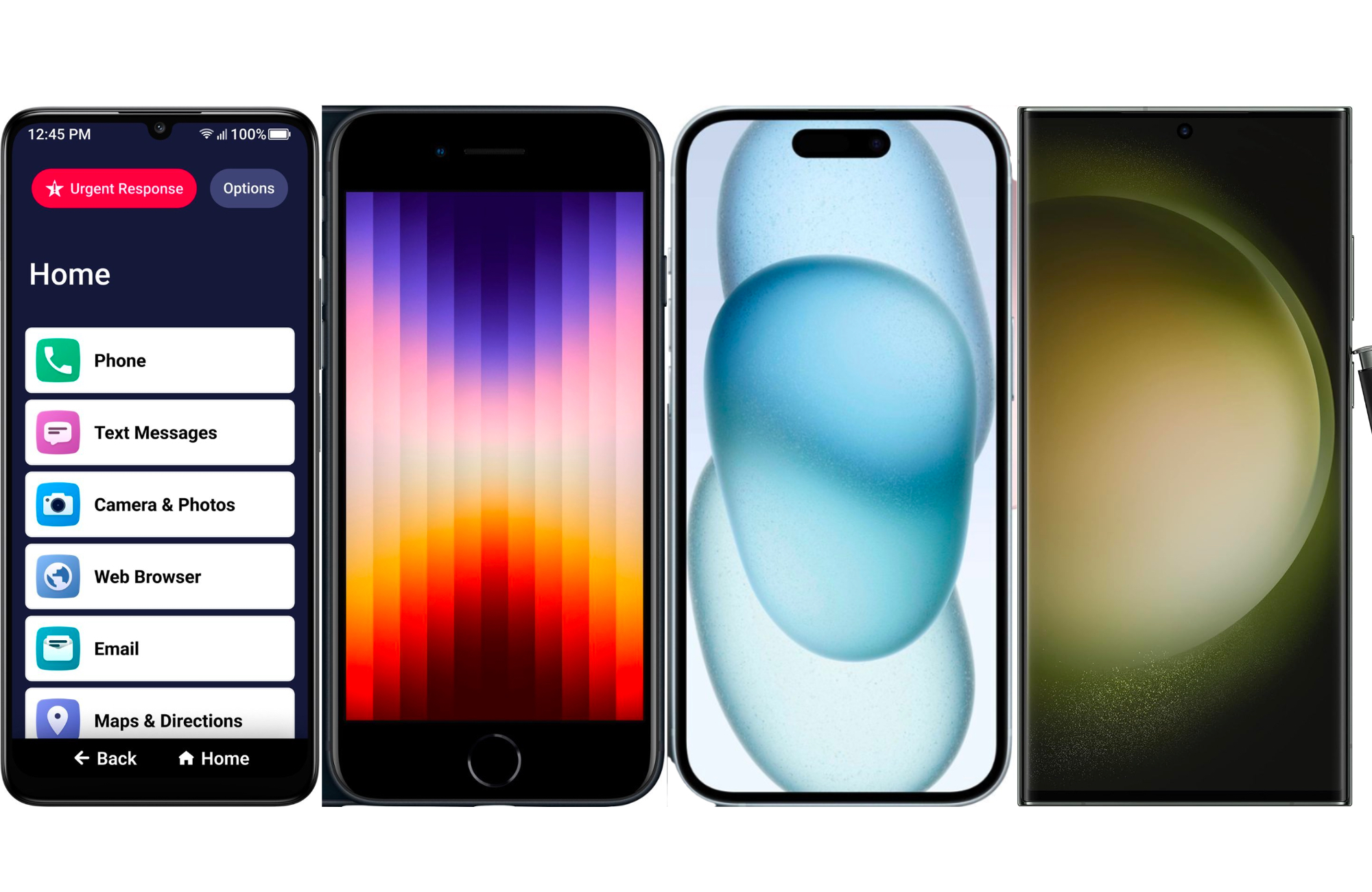
Aging can bring new challenges, not the least of which is choosing a cellphone for seniors. Older users need devices that keep family and friends close while boasting additional health and safety features and accessibility options to make up for changes in eyesight and hearing. Today, even the most popular mobile device makers include heart-rate monitoring, medication reminders, and voice-boosting controls in their flagship models. Senior-centric devices often focus on simplified interfaces and enhanced safety features like one-button emergency response. But there’s no age-to-phone formula. Some of the young-at-heart still crave the flashiest, most feature-rich smartphones available, while others should consider a specialized phone to accommodate factors like memory impairment, low vision, or a bit less grip strength. The best cellphones for seniors will accommodate all those users in the best ways possible.
- Best overall: iPhone 15 Plus
- Best Android: Samsung Galaxy S23 Ultra
- Best under $500: iPhone SE (3rd generation)
- Best senior-centric: Jitterbug Smart4
- Best for cognitive issues: RAZ Memory Cell Phone
- Best budget: Jitterbug Flip2
How we chose the best cellphones for seniors
We conducted thorough research on smartphones and dumbphones (also known as a feature-phone, or any phone that can’t run apps), examining various sources such as our PopSci reviews, peer recommendations, critical analyses, and user testimonials to curate options and walk you through the decision-making process.
The best cellphones for seniors: Reviews & Recommendations
Oddly, there isn’t one age when the world agrees that someone has become a senior citizen. Some restaurants and retailers begin offering discounts at 55, which means people born the same year Apollo 8 rounded the moon and the first Boeing 747 jumbo jet flew are becoming eligible. In other words, Gen X. How do you pick a phone that meets the needs of a Gen Xer and a Boomer? You don’t. Whether you’re looking for a phone for yourself or a loved one, think of their individual needs, comfort with technology, accessibility needs, and, of course, budget.
Best overall: iPhone 15 Plus
iPhone 15 Plus
Pros
- Extensive health tracking
- Plenty of accessibility settings
- Compatibility with hearing aids
- Multiple energy SOS features
- Front-facing camera and two rear cameras (24MP and 48MP)
- Facial recognition to unlock phone
- Supports 5G
Cons
- Expensive
- No charger included
Specs
- Dimensions: 6.33 inches by 3.06 inches by 0.31 inches
- Weight: 7.09 ounces
- Screen: 6.7-inch Super Retina display
- Battery: Up to 26 hours
- Network: Any, if purchased unlocked
- OS: iOS
The Apple 15 Plus—the larger version of the latest iPhone—offers an easy-to-use health app, tons of accessibility features, crash detections, and an emergency satellite SOS signal in case something happens where there is no cell signal. It’s a full-featured smartphone for someone who wants power, good cameras, and all the latest extras.
The phone’s design aims to be inclusive, which benefits older adults. The health app tracks various metrics, including heart health and balance. The medicine tracker allows users to input medicine data down to the color and shape of a pill and build a schedule. The phone sends reminders, which go away when a dose is logged or actively dismissed.
Accessibility features go beyond increasing text size and using the flashlight to read menus. The iPhone 15 is compatible with different hearing devices and can reduce background noise on calls or allow live captions. Swipes, taps, and gestures can be customized using the assistive touch, which can help adapt to tremors or fine motor control challenges. Voice control is also an option.
The 15 Plus starts at $900, depending on configurations, though Apple and cell providers often run specials and offer trade-ins. This cellphone is a great choice for people of all ages, but Apple’s commitment to keeping its phones running and improving them through regular software and security updates means the senior in your life won’t have to think about upgrading.
Best Android: Samsung Galaxy S23 Ultra
Samsung Galaxy S23 Ultra
Pros
- Big, bright screen display
- Good battery life on a single charge
- Front-facing camera and five rear cameras with two telephoto lenses (ranging from 10 MP to 200 MP)
- Includes S-Pen stylus
Cons
- Expensive
- No charger included
- No MicroSD card included
Specs
- Dimensions: 6.4 inches by 3.1 inches by 0.35 inches
- Weight: 8.25 ounces
- Screen: 6.8-inch AMOLED display
- Network: Any, if purchased unlocked
- OS: Android
The Samsung Galaxy S23 Ultra, priced at $1,200, stands out as Samsung’s top-tier flagship, packed with five high-resolution cameras and a massive AMOLED screen. Its exceptional visual experience earned it the title of overall best Android phone, though it also comes with health and safety features preinstalled.
Accessibility settings like TalkBack enable spoken feedback when selecting items or going through tutorials, while gestures and taps can be customized to adapt to coordination issues. The hearing enhancements allow for alerts when doorbells ring or babies cry and support settings to boost voices during conversations.
The S23 Ultra comes with an S Pen stylus, and while not everyone digs using a stylus with a phone, the handful of fans we know are in higher age brackets. These fans like having a tool to hit small keys, even if it takes a while.
Best under $500: iPhone SE (3rd generation)
iPhone SE (3rd generation)
Pros
- Extensive health tracking
- Plenty of accessibility settings
- Compatibility with hearing aids
- Emergency SOS
- Front-facing camera and one rear camera (12 MP)
- Fingerprint recognition to unlock phone
- Supports 5G
Cons
- No headphones or charger included
- Smaller screen
Specs
- Dimensions: 5.45 inches by 2.65 inches by 0.29 inches
- Weight: 5.09 ounces
- Screen: 4.7-inch Retina HD display
- Battery: Up to 15 hours
- Network: Any if purchased unlocked
- OS: iOS
The Apple iPhone SE (3rd generation) offers many of the same health and accessibility features as the 15 Plus with a much lower price tag. As PopSci’s overall best phone under $500 in 2022, the SE has solid call quality and additional hearing settings, including hearing-aid compatibility. The smaller size makes it easy to hold one-handed or to fit in pockets, upping the odds that the phone will be on your person if something happens. But that means a smaller screen. The fonts can be increased to make reading more comfortable, but anyone who likes touch controls may find the keyboard teeny-tiny. It also doesn’t have crash detection or satellite SOS calling. It also features Touch ID, the fingerprint-based method to unlock the phone instead of facial recognition—a plus for people with biometric worries. However, it’s still for an older adult who feels comfortable with technology.
Best senior-centric: Jitterbug Smart4
Pros
- Inexpensive
- Google Assistant
- Long battery life
- Simplified menus
- Internet access
- Front-facing camera, three rear cameras (13MP)
- Supports 4G LTE
Cons
- Screen could be more responsive
- Single button for Urgent Response requires mid or highest plan
Specs
- Dimensions: 6.6 inches by 3.01 inches by 0.35 inches
- Weight: 6.7 ounces
- Screen: 6.75 inches
- Battery: Up to 37 hours
- Network: Lively only
- OS: Android
Smartphones can be remarkably the same, whether you’re a die-hard Apple or Android fan. The Jitterbug Smart4 is another familiar rectangle slab shape with a big 6.75-inch screen and decent cameras, but the interface is very different. Instead of screen after screen of app icons, the Smart4 relies on a text-based list with large fonts. These simple changes eliminate memorizing what each icon means, accidentally clicking on a look-alike, or puzzling over when an app overhauls its look. For about $150, it’s an affordable phone packed with Google Assistant, live captions, and loud speakers.
Jitterbug phones, however, must be used on the Lively network, and a huge part of its appeal is the U.S.-based human support. For the $20-a-month basic plan, users can tap the support team for help with their device, get directions, or schedule a Lyft ride without using the app. Higher tiers unlock a one-button Urgent Response agent, alerts for specified people when an incident happens, care advocates, and on-call nurses. Some users note the screen could be more responsive, with some taps requiring a couple of tries.
Best for cognitive issues: RAZ Memory Cell Phone
Pros
- Remote management by caregiver
- Supports video calls
- One-screen only
- Location tracking
- Can block incoming calls
- Low vision and tremor modes
Cons
- Emergency services require an additional plan
Specs
- Dimensions: 6.49 inches by 2.98 inches by 0.34 inches
- Weight: 6.56 ounces
- Screen: 6.5 inch
- Battery: Up to 12 hours
- Network: Any if purchased unlocked
- OS: Android
Memory and cognitive impairments like dementia or Alzheimer’s can turn a phone into a double-edged sword. You want your loved one to be able to call family and friends while protecting them from spam calls that may confuse them. The RAZ Memory Cell Phone offers a simplified interface and an app for a caregiver (or caregivers) to control it.
RAZ looks like a smartphone, but it doesn’t have any apps. The large screen features a set number of pictures that will ring up a loved one without navigating menus or contact books. The point is a simplified phone experience. When a call comes in, the phone announces the caller’s name and displays only relevant buttons like answer or hang up. It can also receive (but not start) video calls without switching to another app. The recipient doesn’t have to make decisions or risk confusion. A sticky-note reminder takes over the screen when the battery needs recharging.
The caregiver app, which can be shared by multiple people if needed, ultimately controls the Memory Call’s settings. Caregivers can add and edit contacts, set up “quiet hours” with no calls allowed, lockdown the phone so only approved contacts and numbers can come through, and even see how much battery life is left. It also offers location tracking, actively updating the phone’s whereabouts every 15 minutes.
A large, red emergency button will connect the caller to 911. For an additional fee, RAZ Emergency Service can screen the call to avoid repeated non-emergency calls. It also alerts up to three pre-selected numbers that a 911 call went out.
The $300 phone is designed with cognitive issues in mind but could benefit low-vision users, too. The uncluttered interface and large fonts can help with navigation, as do the voice announcements of who’s calling.
Best budget: Jitterbug Flip2
Pros
- Large buttons
- Works with Amazon Alexa
- Supports 4G LTE
- No data plan required
Cons
- No internet
- No NFC technology
- No hotspot capability
- No wireless charging
- Single button for Urgent Response requires mid or highest plan
Specs
- Dimensions: 4.3 inches by 2.19 inches by 0.72 inches
- Weight: 4.7 ounces
- Screen: 3.2 inch
- Battery: Up to 12 hours
- Network: Lively only
Jitterbug Flip2 is a flip phone with large, textured buttons for anyone looking for a phone that does phone things like call and text. It does not have internet access, but it does support Alexa commands. While the 3.2-inch screen would be small for a smartphone, it’s a decent-sized display for a text-based menu. It hits many of our senior features checklist: powerful speaker, hearing-aid compatibility, but only an OK camera. Users crow about the durable phone and its simplicity. The phone’s suggested retail is under $100, though a savvy shopper can find it for less around holidays. And like the Jitterbug Smart4, users can select from its three-tiered support plan.
What to consider when buying the best cellphones for seniors
The first big decision when shopping for the best cellphones for seniors is whether to recommend a smartphone or a cellphone, which will determine the device’s capabilities and user interface. Smartphones have touchscreens and are more complicated but can do a lot more. Cellphones have fewer functions but have tactile buttons that don’t change.
Safety is a concern, so look for phones with one-button or automatic alert systems in case of an incident. Many senior-focused devices offer additional plans to access call centers with urgent care needs or nurses and ways to loop in designated contacts if something happens. However, it might not be worth it for more independent seniors.
There are other factors to consider when deciding which cellphone to recommend, and we’ve highlighted the most important ones below.
Cost
Budget is always a consideration. While the top-of-the-line, full-featured smartphones will cost a grand or more, other options are far less. But the phone is only one part of the equation. Also, consider existing phone contracts and whether your chosen device is compatible. Some senior-centric models—like Jitterbug—operate on networks that aren’t AT&T, T-Mobile, or Verizon. However, opting for phones without big data plans or pre-paid options offers another avenue for controlling monthly costs.
Health and medical features
Our smartphones reflect our society’s obsession with health, fitness, and wellness with built-in functions like step counting and sleep tracking and options to download apps if they aren’t. Double-check that any app-enabled medical devices are compatible with the phone you’re considering to ensure seamless integration. Some senior-focused products go the extra mile, providing support lines for access to on-call nurses, though additional costs usually apply.
Accessibility features
Unless you need them, you may never notice the accessibility features tucked into smartphone menus. Some feature tools to help reduce background noise for hearing impairments, adjust display and text size for visual impairments, or change keyboards and gesture recognition when dexterity is a challenge. Hearing aids can frequently connect to phones through Bluetooth, but it’s not always an easy setup.
While these aren’t minor adjustments, sometimes conditions need more significant user interface changes. Blind or low-vision people can benefit from a simplified, text-heavy menu instead of screens full of tiny icons. Memory-impaired people may prefer to see a streamlined menu of people’s photos to reach out to familiar faces.
FAQs
The decision hinges on the senior’s preferences and needs. Smartphones are ideal for those who enjoy or require tracking health metrics and accessing a wide array of apps. Alternatively, simpler devices like flip phones or feature phones—focused on calling and messaging—may be better for those who prefer a less intricate gadget.
Absolutely. Phones designed with seniors in mind often boast simplified interfaces, larger buttons, and various accessibility options. Some models offer streamlined interfaces, user-friendly navigation, and adjustable settings for visibility and hearing. Additionally, some phones provide support lines for hands-on training and extra medical emergency assistance.
Key emergency features include one-touch dialing for emergency services, SOS buttons, and the capability to display medical information or emergency contacts on the lock screen, but these features are increasingly common in most smartphones. It’s also worth considering devices equipped with fall detection features for an added layer of safety.
This will largely come down to whether you’re shopping for a smartphone or cellphone. You can spend as little as $50 or north of $1,000, depending on the type of device you choose.
Final thoughts on the best cellphones for seniors
- Best overall: iPhone 15 Plus
- Best Android: Samsung Galaxy S23 Ultra
- Best under $500: iPhone SE (3rd generation)
- Best senior-centric: Jitterbug Smart4
- Best for cognitive issues: RAZ Memory Cell Phone
- Best budget: Jitterbug Flip2
Age doesn’t dictate uniformity. By considering individual needs, comfort levels, and preferences, seniors and their caregivers can find a phone that can adapt to their needs and offer peace of mind. Cellphones for seniors can help older people stay connected and independent for longer periods (and hopefully let them call you when they accept that even the snowblowers and snow shovels designed for them are a bad idea to use alone). Rather than monitoring an elderly person in your life, they can communicate with you whenever they need help. If they’re Internet savvy, a smartphone can put the world’s information at their fingertips.
